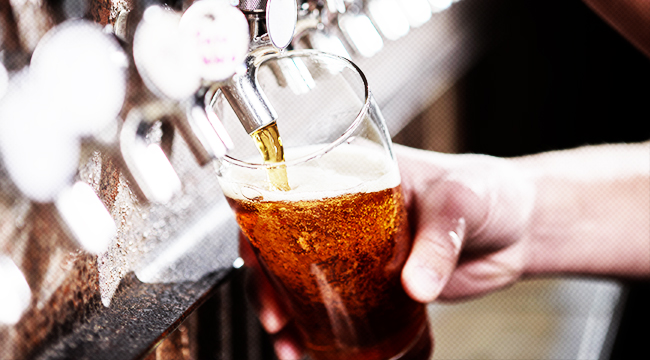
For the past few years, there’s been a major change in the craft beer world. For years, the West Coast IPA was king. But, even though the cult of IPA rages on, many beer heads are ready for something new. Styles like the New England IPA, Sour Ales, and the classic lager are taking hold again. For those looking for a respite from the bitter, hoppy, IPA, the lager is the perfect change of pace. But, what exactly is a lager?
When you think of lagers, your mind might turn to Molson Canadian or Yuengling. But, you should know there’s a lot more to lagers than a beer your grandfather used to drink on fishing trips or your dad drank while he watched Notre Dame football. It takes a lot of discipline to make a good lager, but the style allows for a lot of creative freedom, too. A few years ago, Rogue created a new kind of lager called the Yellow Snow Pilsner that used Oregon spruce tips to add its own Pacific Northwest twist to the beer.
“It’s a toast to the colder temperatures that are needed to make the beer and of course it will be a refreshing beer for all of our favorite cold weather outdoor activities,” says John Maier, brew-master at Rogue.
This sort of ingenuity fits naturally with lagers — a name which simply means to store or age in German. The beer defined much more by the brewing process, rather than the actual flavor notes.
“This process involves using a specific yeast that prefers to ferment at colder temperatures and takes significantly longer than an ale yeast,” says Maier.
“Lager yeasts are genetically distinct from ales and you can taste the difference,” adds Jack Hendler, owner and brewmaster at Jack’s Abby.
Basically, it’s that lager yeast and cold conditioning process that really set lager apart.
“Off-flavors that naturally occur during the fermentation process have time to settle out and resolve during cold conditioning, creating a finished beer that’s extra smooth and clean tasting,” says Hendler. “It allows our ingredients to really shine through.”
From a brewer’s perspective, lagers take more skill to brew so this is a perfect beer style to test technical acumen – and patience.
“The best lagers take longer to brew then ales, and because of aging, the flavors develop more complexity,” Maier says.
https://www.instagram.com/p/BaHU33Pl4kh/?tagged=lager
Taste wise, lagers are known for a refreshing and approachable nature. They are typically less heavy and hoppy than most ales, with a nice crisp finish. This approachability makes them a nice fit for the mainstream and macrobrewers (like Budweiser and Coors) have been producing pale adjunct lager in the US and around the world for decades. As a result, most American drinkers to associate the style with mass production — but, that association is beginning to end thanks to craft brewers. In fact, Hendler only makes lagers.
“We wanted to show American drinkers that brewing lager with traditional processes and ingredients takes a significant amount of time and attention to craft,” he says, “and yields a delicious product.”
Craft lager’s popularity is definitely on the rise, though Hendler says that most people who visit his brewery are still surprised to find themselves connecting with the style.
“The market is warming to the idea of craft lagers,” Hendler says. “But people still come to the brewery saying they don’t like lagers then are shocked when we serve them a complex and flavorful brew.”
In a brewing world that still seems too saturated with IPAs, it’s nice to have some beers that don’t knock you down or try to punch you in the mouth.
“People often turn to lagers when they want a few beers they can constantly reach for without quickly feeling the effects,” says Daron Hollowell, co-founder of 24 Hour Beer. “With this in mind, high drinkability is key.”
Still, in the craft scene IPA is a beast that’s tough to contend with — getting people to try something new requires creativity. At Rogue, Maier tried to bridge the gap between IPAs and lagers with a little inventiveness.
“I just brewed one called Luna Lager which is only available at our pubs,” he says, “For this beer I used unconventional malts and specialty grains, but hopped it like an IPA and fermented it with lager yeast and fermented it at an ale temperature.”
Obviously, lagers have brewers around the country excited. They’re experimenting, riffing, and having fun. Now it’s time for the craft beer loving public to hop on board.






